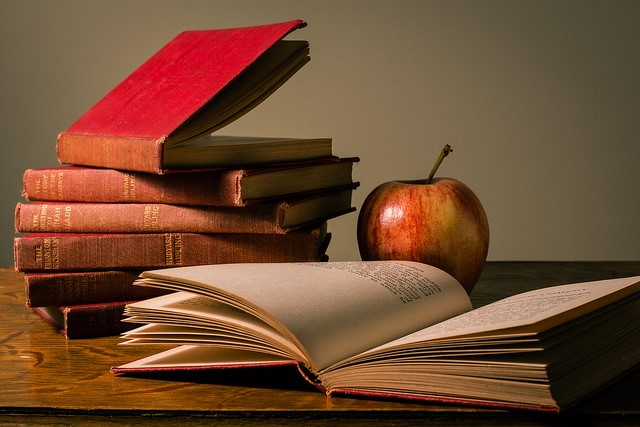The Story of American Education and The McGuffey Readers

Textbooks are a quintessential part of schooling. Every teacher has his or her favorites. However, while which textbooks have been used as primary texts or as supplementary reading for classes has changed a lot over the years, but there are a few from the early days that still stand out as benchmarks in educational history.
Perhaps the two best-known American textbooks are the New England Primer (18th century) and the McGuffey Reader series (19th century). The McGuffey Readers were written by William Holmes McGuffey, a passionate believer in and practitioner of education. He believed that education and religion were closely related and that both were essential to the building of a stable, healthy society. McGuffey became a teacher at age of 14 and started a one-room school in Calcutta, Ohio, with 48 students. He later became a professor and an authority on moral and biblical subjects. He was approached by a publisher, Truman & Smith, to write a series of four graded books targeted at primary students. He completed the first two books within a year of signing the contract. While the first four readers were completed by McGuffey in 1836–1837, the fifth and the sixth textbooks in the series were completed by McGuffey’s brother Alexander during the 1840s. The McGuffey series of readers included stories, poems, essays, and speeches.
The McGuffey Readers became cornerstones in establishing America’s moral values. Although the books were not overtly religious, they did stress religious values and emphasize moral lessons intended to develop students into good citizens. For more than a century, the books encouraged moral values and conveyed a distinctly American cultural framework, with an emphasis on allegiance to the nation. To illustrate the concepts, the McGuffey Readers presented stories emphasizing strength of character, truth, and goodness. The stories distinguished between good and bad by introducing varying viewpoints on many issues and topics, and they concluded with morals, often concerning goodness, truth, and untruth.
Over time, the original publishing firm dissolved, and ownership of the Readers passed through the hands of seven proprietors. The content in the texts also evolved. Revised texts slowly moved away from the subjects of morality and righteousness and began to incorporate emerging values of the prevailing society, as well as a wider worldview. The McGuffey Readers sold more than 120 million copies between 1836 and 1960. The Bible and Webster’s Dictionary are the only books to match such sales.
The popularity and relevance of the Readers remain, so much so that some schools and many parents continue to use them. What textbooks do you use in your classroom? Are they modern inventions or are they, like the Readers, rooted in history, too?





